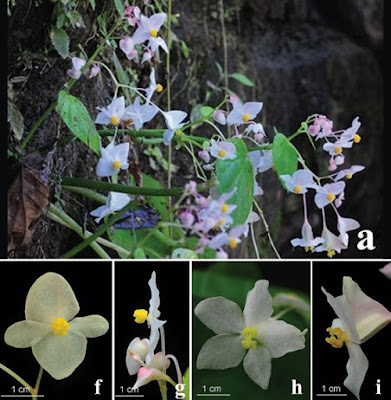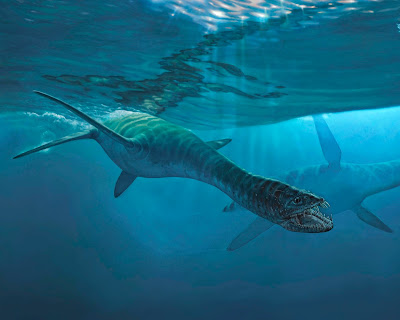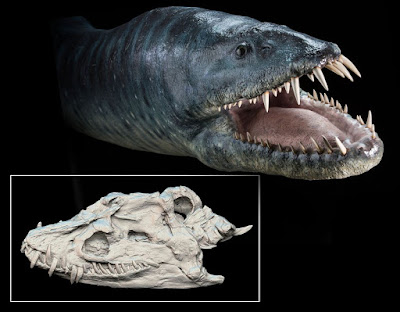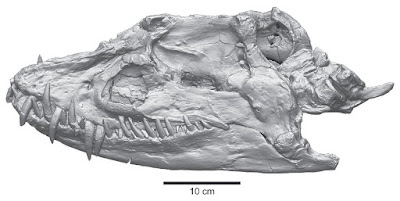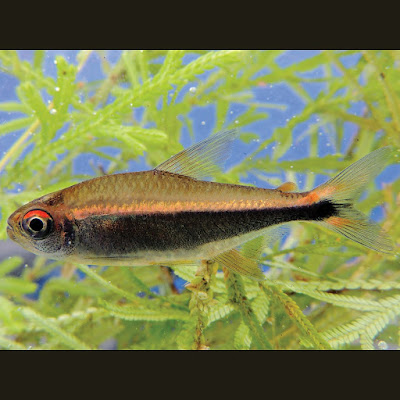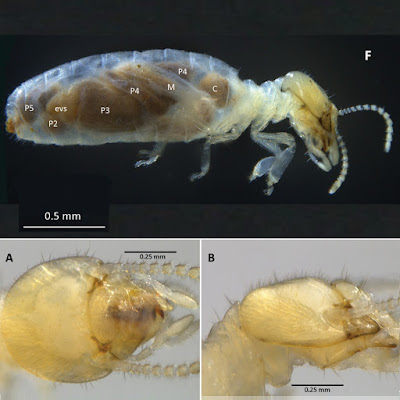[Most Recent Entries] [Calendar View]
Tuesday, April 18th, 2017
| Time | Event | ||||||||
| 1:09a | [Botany • 2017] Begonia myanmarica • A New Species (Begoniaceae) from Myanmar, and Molecular Phylogenetics of Begonia sect. Monopteron
Abstract Background A new species, Begonia myanmarica, was discovered from Myanmar and herein documented. Characterized by a single developed wing in the ovary/fruit, this species would be assigned to sect. Monopteron (sensu Doorenbos et al. in The sections of Begonia including descriptions, keys and species lists: studies in Begoniaceae VI. Wageningen Agricultural University, Wageningen, 1998) that is known by B. griffithiana and B. nepalensis from the Himalaya. To confirm its sectional assignment, we conducted morphological, phylogenetic and cytological studies. Results Morphological observations indicated that B. myanmarica was distinguishable from the two known species of sect. Monopteron by the leaf shape and size, 1-locular ovary, parietal placentation and chromosome number. Molecular phylogenetic analysis using nrITS sequences showed that B. myanmarica was not allied with the clade of sect. Monopteron, though both were nested within sect. Platycentrum-sect. Sphenanthera clade. Conclusions Studies of morphology, molecular phylogenetics and cytology support the recognition of the new species, Begonia myanmarica, which is fully described and illustrated. Our results also indicate that B. myanmarica is not closely related to species previously assigned to sect. Monopteron, suggesting that the fruit morphology of a single developed wing in the ovary/fruit characterizing sect. Monopteron is homoplasious. Keywords: Begonia griffithiana; Begonia nepalensis;Chromosome; Morphology
Diagnosis: Begonia myanmarica is a unique species with an erect habit; large, ovate to broadly ovate leaves (ca. 20–40 cm long, 22–30 mm across); sole, much protruded wing in ovary/fruit; 1-locular ovary with parietal placentation and 2 placentae; and the somatic chromosomes are determined as 2n = 38. Etymology: The epithet refers to Myanmar (formerly Burma) where it was discovered. Conclusion: Studies of morphology, molecular phylogenetics and cytology support the recognition of the new species, Begonia myanmarica, which is fully described and illustrated. Our results also indicate that B. myanmarica is not closely related to species previously assigned to sect. Monopteron, suggesting that the fruit morphology of a single developed wing in the ovary/fruit characterizing sect. Monopteron is homoplasious. Yu-Hsin Tseng, Young-Dong Kim, Ching-I Peng, Khin Myo Htwe, Seong-Hyun Cho, Yoshiko Kono and Kuo-Fang Chung. 2017. Begonia myanmarica (Begoniaceae), A New Species from Myanmar, and Molecular Phylogenetics of Begonia sect. Monopteron. Botanical Studies. DOI: 10.1186/s40529-017-0175-9 | ||||||||
| 1:30a | [Paleontology • 2017] Nakonanectes bradti • A New Elasmosaurid (Sauropterygia, Plesiosauria) from the Bearpaw Shale (Late Cretaceous, Maastrichtian) of Montana Demonstrates Multiple Evolutionary Reductions of Neck Length within Elasmosauridae
ABSTRACT Plesiosauria is a diverse clade of marine reptiles that have been studied since the early 19th century. However, phylogenetic relationships within the group have been contentious due to limited taxon sampling and a misunderstanding of how ontogeny and interspecific and intraspecific variation affect character states. This is particularly true for elasmosaurids, a Cretaceous clade of long-necked plesiosaurians. In 2010, a new, nearly complete skeleton, MOR 3072, was collected from the Late Cretaceous (Campanian–Maastrichtian) Bearpaw Shale of northeast Montana. The specimen provides detailed morphological information rarely observed within Elasmosauridae, including a complete skull, the anterior 23 cervical vertebrae, a partial dorsal and caudal vertebral column, incomplete pectoral and pelvic girdles, elements of both fore- and hind limbs, ribs, and gastralia. Being early Maastrichtian in age, MOR 3072 is the stratigraphically youngest elasmosaurid known from the Western Interior Seaway and is recognized as a new genus and species, Nakonanectes bradti. We present a description of Nakonanectes bradti and conduct an extended phylogenetic analysis of Elasmosauridae. N. bradti is found to be deeply nested within the clade of large-bodied, long-necked, Western Interior Styxosaurinae. However, MOR 3072 is one of the smallest adult elasmosaurids ever recovered (5.1–5.6 m) and exhibits a reduced neck length compared with other North American elasmosaurids, resulting from a reduction in both centrum length and number of cervical vertebrae (39–42 were originally present). These features are convergent with the Southern Hemisphere clade of short-necked Maastrichtian elasmosaurids, Aristonectinae, and demonstrate multiple origins of short-necked body proportions from longer-necked ancestors within Elasmosauridae.
SYSTEMATIC PALEONTOLOGY DIAPSIDA Osborn, 1903 SAUROPTERYGIA Owen, 1860 PLESIOSAURIA de Blainville, 1835 XENOPSARIA Benson and Druckenmiller, 2014 ELASMOSAURIDAE Cope, 1869 STYXOSAURINAE Otero, 2016 Phylogenetic Definition:— The clade including all taxa more closely related to Styxosaurus snowii than to Aristonectes parvidens (revised from Otero, 2016). NAKONANECTES, gen. nov. Type and Only Species:— Nakonanectes bradti. Horizon:— Bearpaw Shale, lower Maastrichtian, Upper Cretaceous. NAKONANECTES BRADTI, gen. et sp. nov. Holotype and Only Specimen:— MOR 3072, including a complete skull, articulated anterior 23 cervical vertebrae, dorsal and anterior caudal vertebrae, partial coracoids, much of the forelimbs including partial humeri, complete epipodial and mesopodial rows and associated phalanges, both ilia and portions of the pubis and ischium, portions of the hind limb including one complete and one partial femur with portions of the epipodial row, and numerous ribs and gastralia. Etymology:— The generic name is derived from Nakona, the name for native Assiniboine people of northeastern Montana, which means ‘the friendly people.’ The specific name honors David Bradt of Florence, Montana, who found the specimen.
Serratos, D. J., P. Druckenmiller, and R. B. J. Benson. 2017. A New Elasmosaurid (Sauropterygia, Plesiosauria) from the Bearpaw Shale (Late Cretaceous, Maastrichtian) of Montana Demonstrates Multiple Evolutionary Reductions of Neck Length within Elasmosauridae. Journal of Vertebrate Paleontology. DOI: 10.1080/02724634.2017.1278608. Alaska scientists help name new elasmosaur species from Montana - UAF News and Information http://news.uaf.edu/alaska-scientists-he | ||||||||
| 9:38a | [Ichthyology • 2017] Hyphessobrycon klausanni • A New Species of Hyphessobrycon (Characiformes, Characidae) from the upper Guaviare River, Orinoco River Basin, Colombia
Abstract Hyphessobrycon klausanni sp. n. is described from small drainages of the upper Guaviare River (Orinoco River Basin) in Colombia. It differs from all congeners by having a wide, conspicuous, dark lateral stripe extending from the anterior margin of the eye across the body and continued through the middle caudal-fin rays, and that covers (vertically) three or four horizontal scale rows. It also differs by having an orange-yellow stripe extending from the anterosuperior margin of the eye to the caudal peduncle above the lateral line in life. It differs from all other species of Hyphessobrycon that have a similar dark lateral stripe: H. cyanotaenia, H. loretoensis, H. melanostichos, H. nigricinctus, H. herbertaxelrodi, H. eschwartzae, H. montogoi, H. psittacus, H. metae, H. margitae, H. vanzolinii, and H. peruvianus in having only three or four pored scales in the lateral line, 21 to 24 lateral scales and six teeth in the inner premaxillary row. Hyphessobrycon klausanni differs from H. loretoensis in having seven to eight maxillary teeth (vs. three to four) and in having a longer caudal peduncle (12.4–17.0% SL vs. 4.6–8.0% SL). Additionally Hyphessobrycon klausanni can be distinguished from the other species of Hyphessobrycon with a dark lateral stripe from the Orinoco River Basin (H. metae and H. acaciae) in having two teeth in the outer premaxillary row (vs. three to four) and 10 branched pectoral–fin rays (vs. 11 to 12). It further differs from H. metae by the length of the snout (17.6–22.8% HL vs. 9.9–15.2% HL) and by the length of the caudal peduncle (12.4–17.0% SL vs. 7.3–11.8% SL). Keywords: New taxon, Neotropical Ichthyology, Guaviare River, diversity
Etymology: Research leading to the discovery and recognition of this species was partially funded by Mr. Klaus-Peter Lang from Oberhausen, Germany. To commemorate the 80th birthday of his mother, this species is dedicated to and named for his father “Klaus” and his mother “Anni”. Ecological note: Hyphessobrycon klausanni lives in shallow (0.30–1.5 m) well-oxygenated (6.39–7.68 mg/l) streams with transparent waters flowing (0.063 m/s) over different types of substrates (rocks, sand, gravel and decomposing organic material). The temperature range was narrow, 25.5–26°C but pH varied from moderately acidic to basic (6.47–8.7). Hyphessobrycon klausanni was found near shore among aquatic vegetation, tree roots and fallen logs. Other species found at the sites included: Hemigrammus barrigonae, Ctenobrycon spilurus, Tyttocharax metae, Moenkhausia oligolepis, M. chrysargyrea, M. lepidura, Chrysobrycon guahibo, Ochmacanthus orinoco, Farlowella vittata, Ancistrus triradiatus, Centromochlus reticulatus and Anablepsoides sp. Stomach content analysis (n = 4) revealed a diet of aquatic and terrestrial invertebrates: Coleoptera (Dytiscidae), Ephemeroptera, Hymenoptera (Formicidae), larvae of Chironomidae and others not identified due to the degree of fragmentation. Carlos A. García-Alzate, Alexander Urbano-Bonilla and Donald C. Taphorn. 2017. A New Species of Hyphessobrycon (Characiformes, Characidae) from the upper Guaviare River, Orinoco River Basin, Colombia. ZooKeys. 668; 123-138. DOI: 10.3897/zookeys.668.11489 Resumen: Hyphessobrycon klausanni sp. n. es descrita de pequeños drenajes del alto río Guaviare (cuenca del río Orinoco) en Colombia. Se diferencia de todos los congéneres por tener una amplia franja lateral oscura lateral que se extiende desde el margen anterior del ojo a través del cuerpo y se continúa hasta la base de la aleta caudal y que cubre (verticalmente) tres o cuatro escamas laterales, además difiere por tener una franja de color naranja-amarillo que se extiende desde el margen anterosuperior del ojo hasta el pedúnculo caudal por encima de la línea lateral en vida. Se diferencia de H. cyanotaenia, H. loretoensis, H. melanostichos, H. nigricinctus, H. herbertaxelrodi, H. eschwartzae, H. montogoi, H. psittacus, H. metae, H. margitae, H. vanzolinii, y H. peruvianus por tener solo 3 a 4 escamas con poros en la línea lateral, 21 a 24 escamas laterales y 6 dientes en la fila interna del premaxilar. Hyphessobrycon klausanni se diferencia de H. loretoensis por presentar 7 a 8 dientes maxilares (vs. 3 a 4) y la longitud del pedúnculo caudal (12.4–17.0% LE vs. 4.6–8.0% LE). Además se puede distinguir de las demás especies con banda lateral oscura presentes en la cuenca del rio Orinoco (H. metae y H. acaciae) por tener dos dientes en la fila externa del premaxilar (vs. 3 a 4) y 10 radios ramificados en la aleta pectoral (vs. 11 a 12), además se separa de H. metae por la longitud de hocico (17.6–22.8% LC vs. 9.9–15.2% LC) y por la longitud del pedúnculo caudal (12.4–17.0% LE vs. 7.3–11.8% LE). Palabras clave: Nuevo taxón, Ictiología Neotropical, río Guaviare, diversidad | ||||||||
| 9:59a | [Entomology • 2017] Disjunctitermes insularis • A New Soldierless Termite Genus and Species (Isoptera, Termitidae, Apicotermitinae) from Guadeloupe and Peru Abstract Disjunctitermes insularis gen. n. & sp. n. is described from workers collected on Guadeloupe and in Peru and is the first soldierless termite found on a deep-water island. As with many soldierless and soil-feeding termite species, the enteric valve morphology is an essential diagnostic character of D. insularis. The D. insularis sequence cluster, derived from a barcode analysis with twelve other described genera of New World Apicotermitinae, is well resolved. Results of a stochastic dynamic spread model suggest that the occurrence of D. insularis on Guadeloupe may be the result of a pre-Colombian overwater dispersal event from mainland South America. Keywords: Soil-feeder, taxonomy, barcode sequence, stochastic spread, overwater dispersal Disjunctitermes Scheffrahn, gen. n. Diagnosis: Disjunctitermes is one of the described Neotropical apicotermitines that, along with Anoplotermes banksi, A. pacificus, and Hydrecotermes spp., possess strongly inflated fore tibia and lack spiny sclerotized enteric valves. Disjunctitermes is closest to A. banksi, but can be distinguished from the latter by the subsidiary tooth on the left mandible, the larger EV seating and the more truncate terminus of P2 (Fig. 3C, D). Hydrecotermes lacks a spheroidal mesenteric tongue. Etymology: The genus name is derived from its current, widely disjunct distribution on Guadeloupe and Peru. Disjunctitermes insularis Scheffrahn, sp. n. Diagnosis: See also comparison for Disjunctitermes above. The EV pads of D. insularis differ from those of the four other described species with unarmed EV as follows (Fig. 3): each pad of A. banksi is vase-shaped, with a narrow posterior end that widens into an oval base reminiscent of an orb-weaving spider web (Fig. 3C); the A. pacificus pads are shaped similarly to those of A. banksi but are less concentric and are adorned with a few unsclerotized spines (Fig. 3E); while the pads of H. arienesho and H. kawaii are ovoid in shape (Figs 3F and 3G, respectively). Etymology: The species name is derived from its unexpected island locality. Habitat and biology: Workers were collected in foraging groups under rocks and stones in rainforest habitats. Like many New World Apicotermitinae, D. insularis does not build any above-ground structures. Mature worker gut contents confirm that they feed on the organic fraction of soil. Rudolf H. Scheffrahn, Tiago F. Carrijo, Anthony C. Postle and Francesco Tonini. 2017. Disjunctitermes insularis, A New Soldierless Termite Genus and Species (Isoptera, Termitidae, Apicotermitinae) from Guadeloupe and Peru. ZooKeys. 665; 71-84. DOI: 10.3897/zookeys.665.11599 |
| << Previous Day |
2017/04/18 [Calendar] |
Next Day >> |
